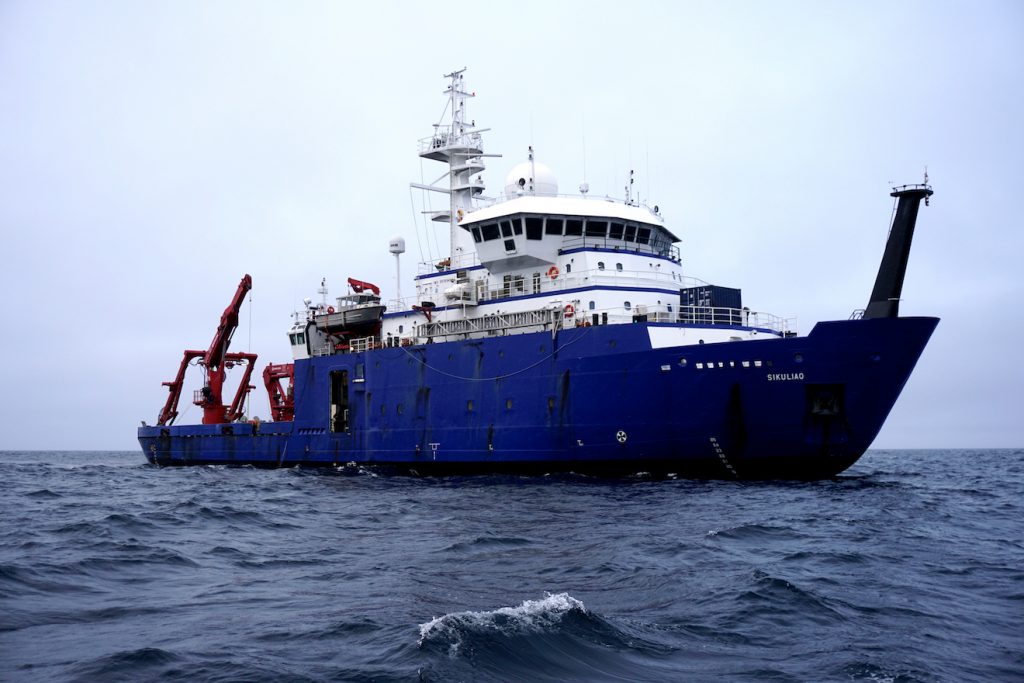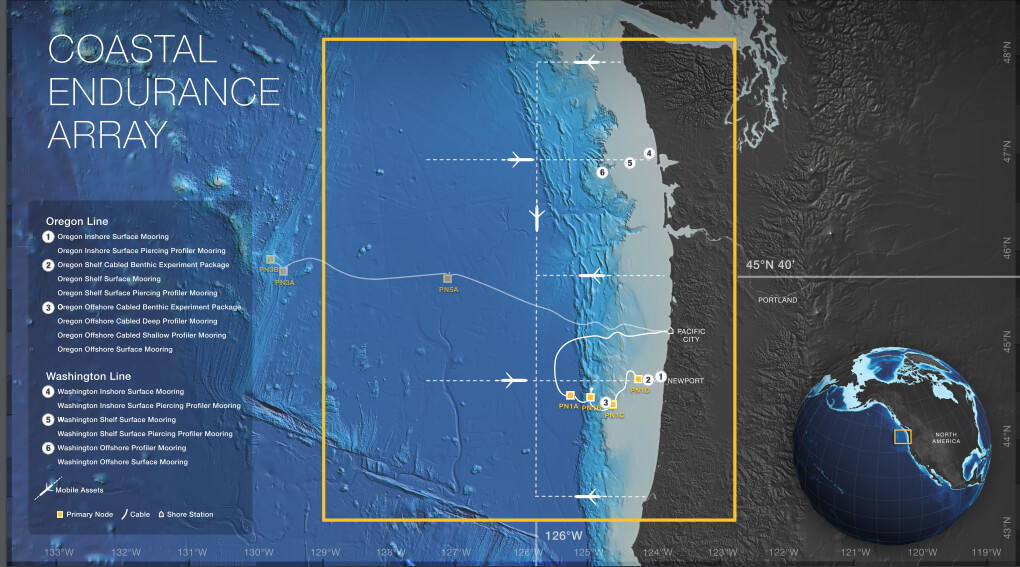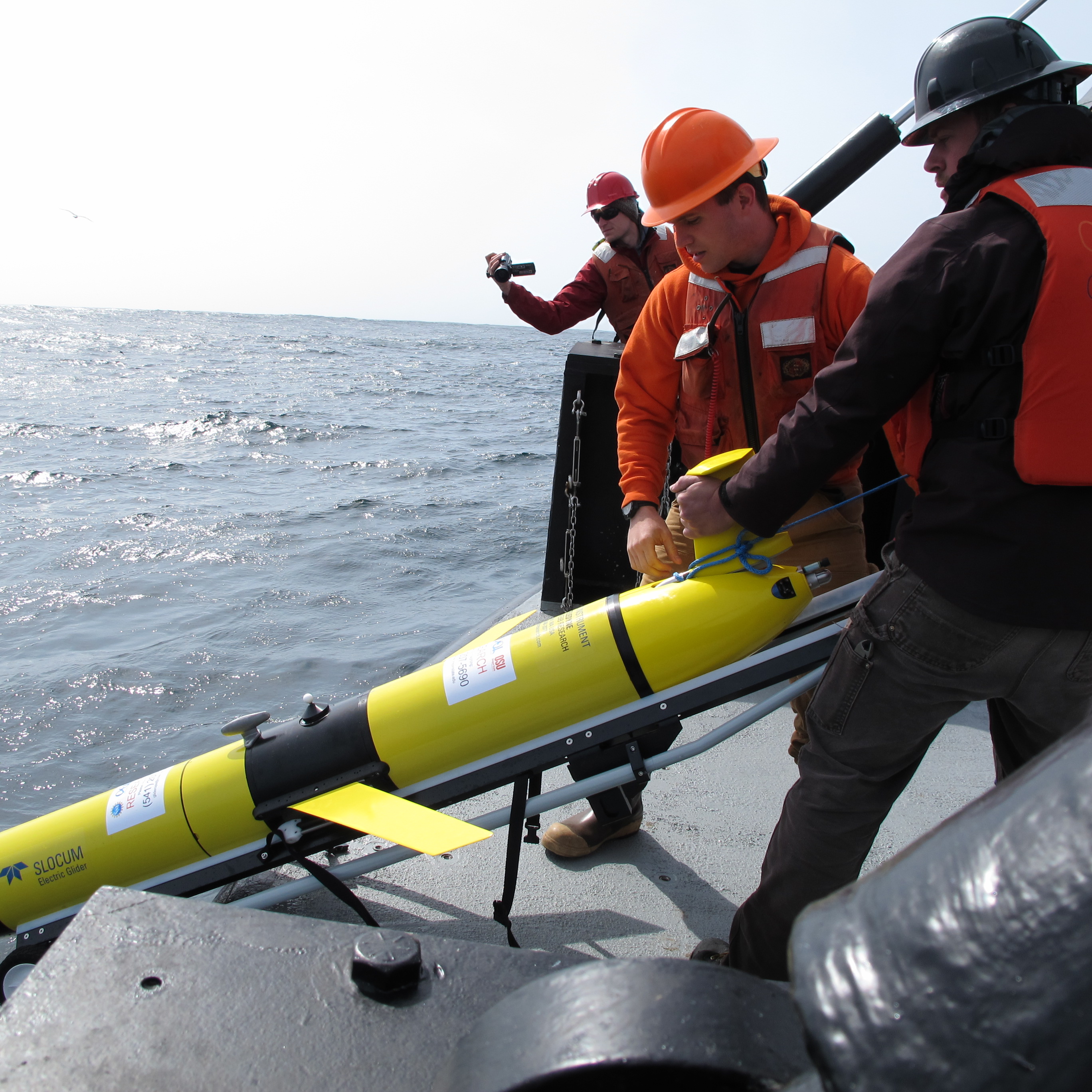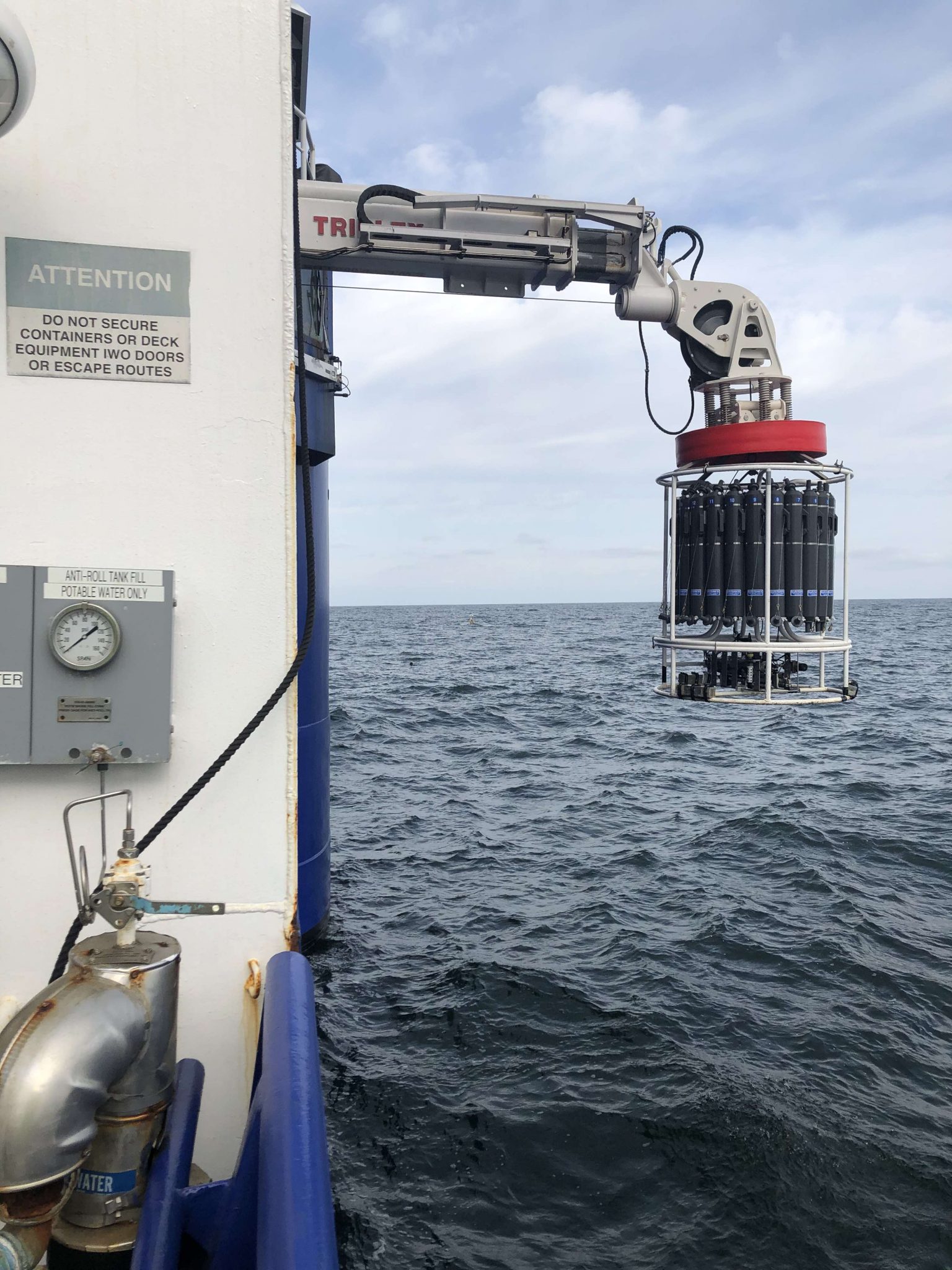Endurance 16
R/V Sikuliaq
The 261-foot R/V Sikuliaq is one of the most advanced university research vessels in the world, capable of breaking ice up to 2.5 feet thick.
Pronounced [see-KOO-lee-auk], the vessel is owned by the National Science Foundation and operated by the College of Fisheries and Ocean Sciences at the University of Alaska Fairbanks, as part of the U.S. academic research fleet.
Read MoreCoastal Endurance Array
Located in the Northeast Pacific Ocean off the coasts of Oregon and Washington, the Coastal Endurance Array is part of a regional observatory network that includes OOI, Station Papa, and Ocean Networks Canada. Measurements taken by this network collectively capture variability of ocean properties across a broad range of temporal and spatial scales. They allow examination of ocean health issues, including hypoxia, ocean acidification, and harmful algal blooms.
Read MoreGliders
An array of ~6 gliders travels along five east-west transect lines within the Coastal Endurance Array from approximately the 20-m isobaths to 126 W (and out to 128 W along the Oregon and Washington lines), as well as a north-south transect along 126 W. They collect ocean observing data to supplement those collected by the…
Read MoreCTD Rosettes
An activity that happens on every Coastal Endurance cruise are CTD (Conductivity, Temperature, and Depth) casts. CTDs are used to collect water samples at the deployment and recovery sites to allow scientists to compare ship versus buoy meteorological measurements at surface mooring sites. This data is also important for calibrating other instruments on the moorings.
Read More



